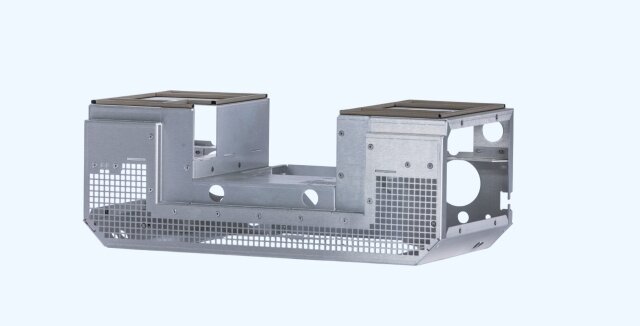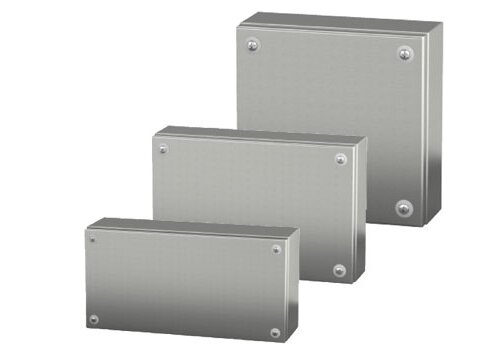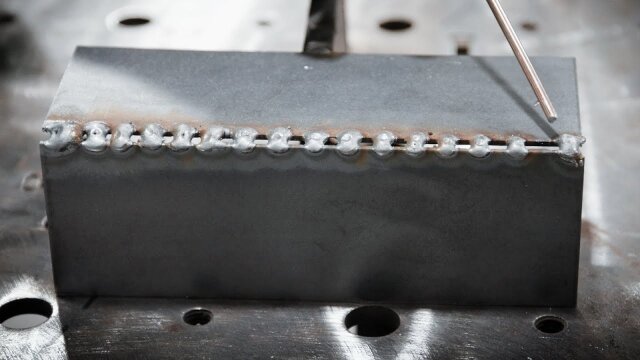Many companies face challenges when developing new products. They often deal with multiple suppliers, unclear timelines, and unexpected costs. Customers want faster, smoother, and more reliable production, but managing different steps separately makes the process harder. A straightforward solution is needed for businesses that wish for efficiency, control, and peace of mind.
Turnkey manufacturing offers a direct path to reducing stress in product development. It simplifies operations and gives businesses one trusted partner for end-to-end solutions.
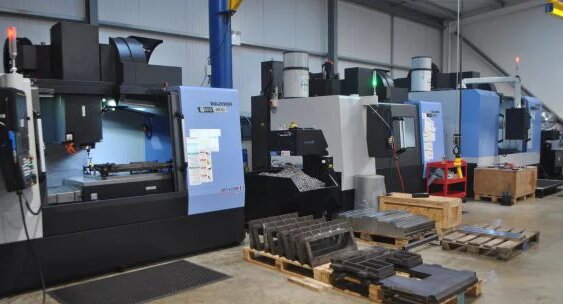
What is Turnkey Manufacturing?
Turnkey manufacturing is an end-to-end service. The turnkey approach means the customer hands over a project to a manufacturer who manages everything. The provider oversees product design, prototyping, material sourcing, production, assembly, testing, and packaging. The client receives a final product that is ready for use or sale.
Companies often choose turnkey manufacturing because it simplifies complex projects. For example, the business works with one partner instead of managing separate contracts for design, machining, and assembly. This single point of contact manages the entire chain of tasks. The result is greater efficiency, fewer delays, and more substantial cost control.
The phrase “ready to operate” describes the main idea of turnkey manufacturing. After receiving the product, the client does not need to adjust or complete additional steps. Everything arrives in working condition. The model is standard in industries where time, quality, and consistency are critical.
How Turnkey Manufacturing Works?
A turnkey operation transforms your design into a delivered product. It is a seamless, managed pipeline. Let’s look at how it functions.
Overview of the Turnkey Process
The process usually starts with product design or an idea that the client provides. The manufacturer creates drawings or prototypes to confirm the concept. Once approved, materials are sourced and production begins. The same team manages fabrication, assembly, testing, and quality checks. After these steps, the product is packaged and delivered ready for use.
This streamlined chain of steps allows for fewer delays and greater control. Every stage is monitored under one system, which reduces mistakes and ensures consistency.
Role of the Manufacturer
The manufacturer is the primary driver of the project. They manage engineering, supply chain, and production schedules. They are also responsible for quality inspections and final delivery, ensuring all process parts meet the specifications.
By taking full ownership, the manufacturer helps reduce risks for the client. They balance cost, timing, and quality, while keeping communication open and transparent.
Client Involvement and Expectations
Clients stay involved at the start to define requirements, budget, and deadlines. They review early designs or prototypes to confirm the product direction. After this stage, their involvement is lighter. The manufacturer takes over the detailed work.
Clients can expect progress updates, regular communication, and testing results when needed. Their primary role is to provide clear goals and approve key milestones. This balance lets the client focus on business growth while the manufacturer delivers a finished, ready-to-use product.

Key Components of a Turnkey Solution
A turnkey solution covers every stage needed to transform an idea into a finished product ready for market. Each part works together to create a smooth and reliable process.
Design and Prototyping Services
The process begins with design. Engineers create detailed drawings based on the client’s idea or requirements. Prototyping is used to test the design in its real form. Prototypes help confirm functionality, fit, and appearance before mass production. This step reduces risks by finding issues early and adjusting before larger investments.
Supply Chain Management
Managing materials is a key part of a turnkey solution. The manufacturer handles sourcing, vendor selection, and purchasing. They ensure that raw materials and components meet quality standards and arrive on time. A strong supply chain strategy prevents shortages and delays, keeping the project on track and within budget.
Manufacturing and Assembly Operations
Once materials are ready, the focus shifts to production. Skilled teams use methods like machining, cutting, stamping, and welding to build the parts, which are then assembled into finished products. Centralizing fabrication and assembly makes the process faster and more efficient, with fewer errors caused by supplier handoffs.
Testing and Quality Control
Every product undergoes testing to confirm that it works as intended. Quality checks happen at each stage of production, from incoming materials to final assembly. The manufacturer inspects for dimensions, strength, and performance. This step ensures that the final product meets client expectations and industry standards.
Logistics and Delivery
The last stage involves packaging, storage, and shipping. The manufacturer prepares the product for safe transport and delivers it directly to the client. This “ready-to-use” delivery completes the turnkey process. Reliable logistics help customers receive products on time, in good condition, and without added stress.
The Strategic Advantages of Turnkey Manufacturing
Choosing a turnkey approach offers clear strategic benefits. These advantages directly impact your project’s success and your bottom line.
Reduced Time-to-Market
Time is critical when launching new products. A turnkey model shortens lead times because one provider manages all stages. Coordinating with separate designers, suppliers, and assemblers is unnecessary. Fewer handoffs mean faster progress and quicker delivery to market.
Mitigation of Project Risks
The risk of delays, errors, or miscommunication increases when multiple vendors are involved. Turnkey manufacturing lowers these risks by centralizing responsibility. One provider manages the entire workflow, which ensures consistency and reduces the chance of costly mistakes.
Cost Efficiency and Budget Predictability
Dealing with many suppliers often leads to hidden costs and budget surprises. A turnkey approach gives clients one clear price for the whole project. The manufacturer controls sourcing, production, and delivery, reducing overhead and improving cost predictability.
Access to Specialized Expertise and Technology
Turnkey providers often have advanced equipment and skilled teams under one roof. Clients gain access to these resources without having to invest in them directly. This advantage allows smaller businesses to use high-level technology and knowledge while managing expenses.
Single Point of Accountability
A turnkey solution gives clients one contact for the entire project. This single point of accountability simplifies communication and ensures issues are solved quickly. The manufacturer takes full ownership of the outcome, which gives clients greater confidence in the final product.
Limitations of Turnkey Manufacturing
Turnkey manufacturing has many benefits, but it also has some drawbacks. Understanding these potential downsides before choosing this path is important.
High Initial Costs
Turnkey projects often require higher upfront investment. The client pays for a complete package since the provider manages every stage, from design to delivery. This can be a challenge for startups or small businesses with tight budgets. However, these costs may balance out over time through savings in efficiency and reduced risks.
Reduced Flexibility
Clients may face less flexibility once the project begins. Because the process is streamlined under one provider, making changes after approval can be difficult. Adjusting designs, materials, or schedules may require renegotiation, which slows progress.
Dependence on a Single Supplier
Relying on one provider creates a strong dependency. The entire project can be affected if the supplier faces delays, shortages, or internal issues. This reliance places significant trust in the provider’s reliability and stability.
Limited Control Over Production
In a turnkey model, clients often have less direct oversight. While updates and reports are shared, the manufacturer has day-to-day control. Some businesses prefer closer involvement in production decisions, which this approach does not always allow.
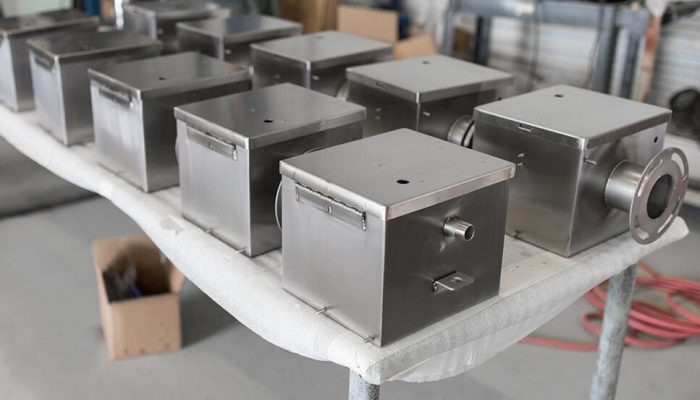
Choosing a Turnkey Manufacturing Partner
Selecting the right partner is critical for the success of a turnkey project. The provider will handle every stage, so careful evaluation is needed before deciding.
Essential Criteria for Selection
Businesses should look for a partner with a proven record of reliability, consistent quality, and strong references. Financial stability, capacity, and long-term commitment also matter. A capable provider should show they can support projects from concept to delivery without delays or gaps.
Evaluating Technical Capabilities and Experience
A strong partner has the technical skills and equipment to handle complex projects. Their experience across industries shows they can adapt to different requirements. Reviewing case studies or past projects helps confirm their abilities. Teams with years of expertise bring problem-solving skills and the ability to manage challenges smoothly.
Assessing Communication and Project Management Style
Clear communication keeps projects on track. The partner should provide regular updates, progress reports, and fast responses to questions. Their project management style should be organized and transparent. A partner who works closely with clients helps prevent misunderstandings and builds trust.
Understanding the Contract and Service Level Agreements (SLAs)
Contracts and SLAs define the scope of work, timelines, pricing, and performance standards. Clients should carefully review these terms before starting. A strong agreement protects both sides and sets clear expectations. It ensures that the partner delivers on commitments and provides accountability if problems arise.
Conclusion
Turnkey manufacturing offers businesses a complete solution by managing design, sourcing, production, assembly, testing, and delivery under one partner. It helps reduce time-to-market, lowers risks, and improves cost control, but it also comes with limits such as higher upfront costs and reduced flexibility. Choosing the right partner with strong technical skills, clear communication, and reliable project management is key to success.
Are you looking for a trusted partner to handle your end-to-end production needs? Contact us today to discuss your project and get a tailored solution.
Hey, I'm Kevin Lee

For the past 10 years, I’ve been immersed in various forms of sheet metal fabrication, sharing cool insights here from my experiences across diverse workshops.
Get in touch

Kevin Lee
I have over ten years of professional experience in sheet metal fabrication, specializing in laser cutting, bending, welding, and surface treatment techniques. As the Technical Director at Shengen, I am committed to solving complex manufacturing challenges and driving innovation and quality in each project.


